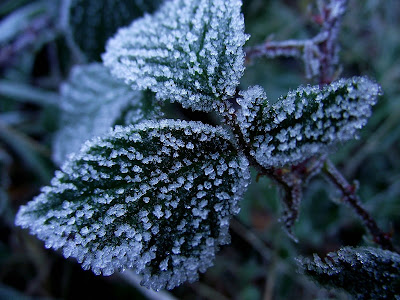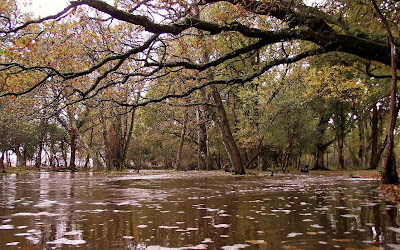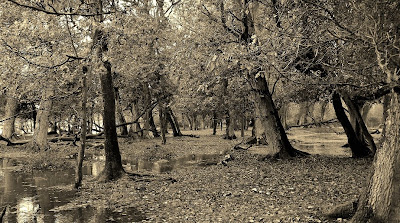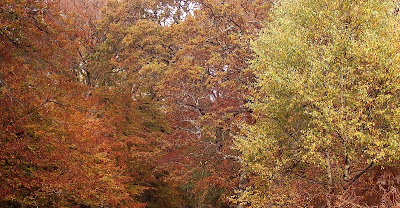
Change in the forest is tangible, your senses are overwhelmed; the sound of change heard through the sounds of water coursing, the smell of damp fills your nose and all abouts change is clearly upon the land. How swiftly appears Autumns transit, there is no mistaking winters approaching. An increasing number of skeletal forms amongst the canopy herald the opening of the woods, boughs which until recently masked views between stands sway naked, seasonal vistas revealed. Other trees will retain their finery. Douglas Firs are the most agreeable of the introduced tree species, their strong, sweet, heavy scent fills the air*, their massive forms, striking and impressive, never fail to bowl you over. Thick, tall and imposing trunks stretch out of sight, piercing the canopy with ease.
Throughout the open area around Milliford Bridge cows and horses vie for the lushest, tastiest patches to graze, moving amongst each other gingerly, there are occasional confrontations; it's a turf war, literally! There's movement amongst the woodland fringe, a band of pigs move through the trees like marauders or pillaging Vikings; it's akin to the plains of the Serengeti, although a touch smaller and damper. The rain continues to fall silently.
*The strong smell of this species arises from the sticky resin which exudes from the bark; a good burning (incense) resin.
 Snow fell in the woods today, not soft and fluffy, more like tiny hard hail stones, cascading through the almost bare canopy, the sound is reminiscent of a hundred rain sticks. There's a sharp wind too. The forest continues its silent vigil, bracing itself for the winter to come; all the tradition natural portents suggesting it will be a harsh one.
Snow fell in the woods today, not soft and fluffy, more like tiny hard hail stones, cascading through the almost bare canopy, the sound is reminiscent of a hundred rain sticks. There's a sharp wind too. The forest continues its silent vigil, bracing itself for the winter to come; all the tradition natural portents suggesting it will be a harsh one.































